Standing on a line, not being on either side
Terrence Musekiwa

Terrence Musekiwa
Standing on a line, not being on either side, 2017
Catinca Tabacaru, NY

Terrence Musekiwa Standing on a line, not being on either side, 2017
Catinca Tabacaru, NY
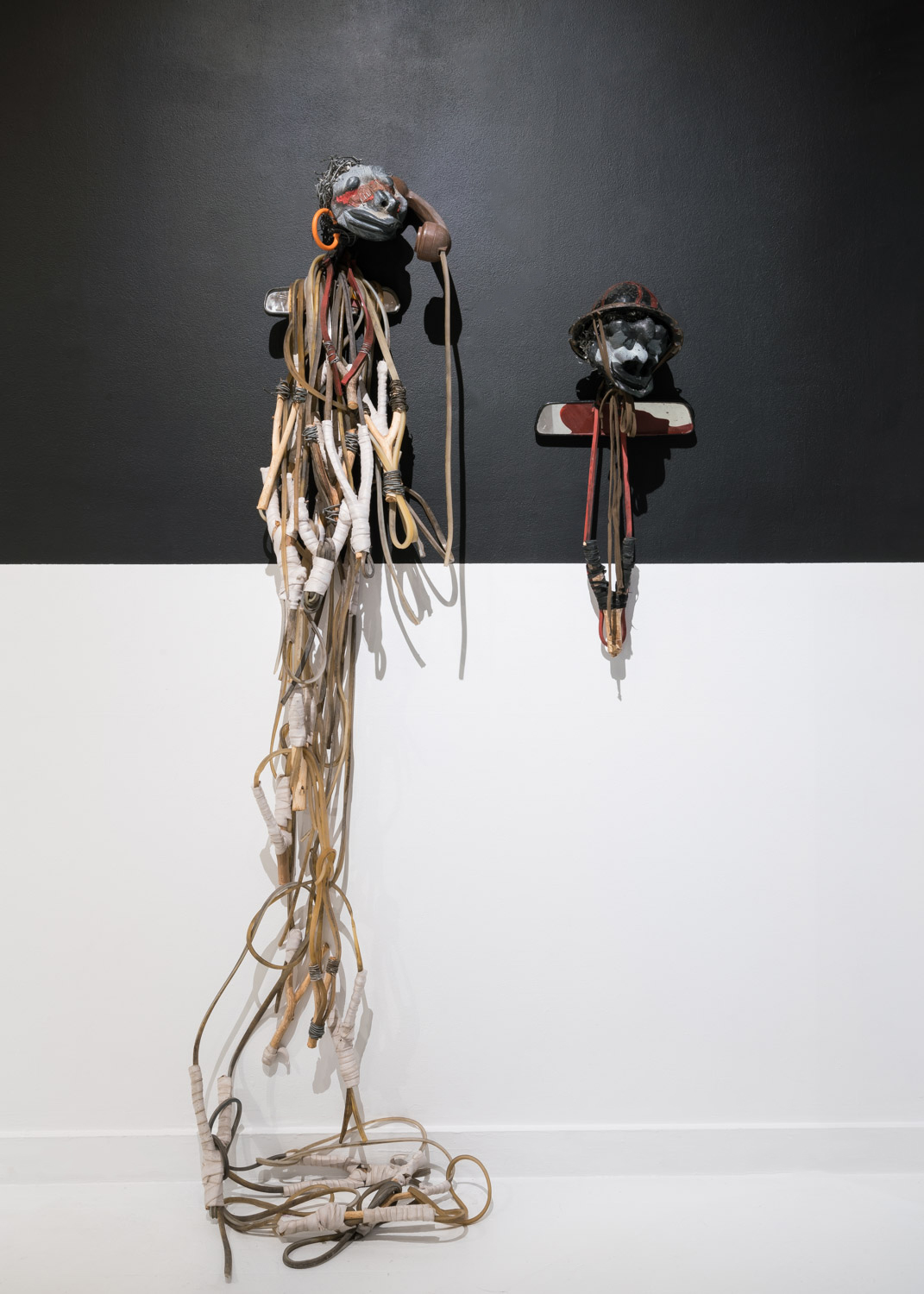
Terrence Musekiwa
Standing on a line, not being on either side, 2017
Catinca Tabacaru, NY

Terrence Musekiwa
Call for a hunter, 2017 (Detail)
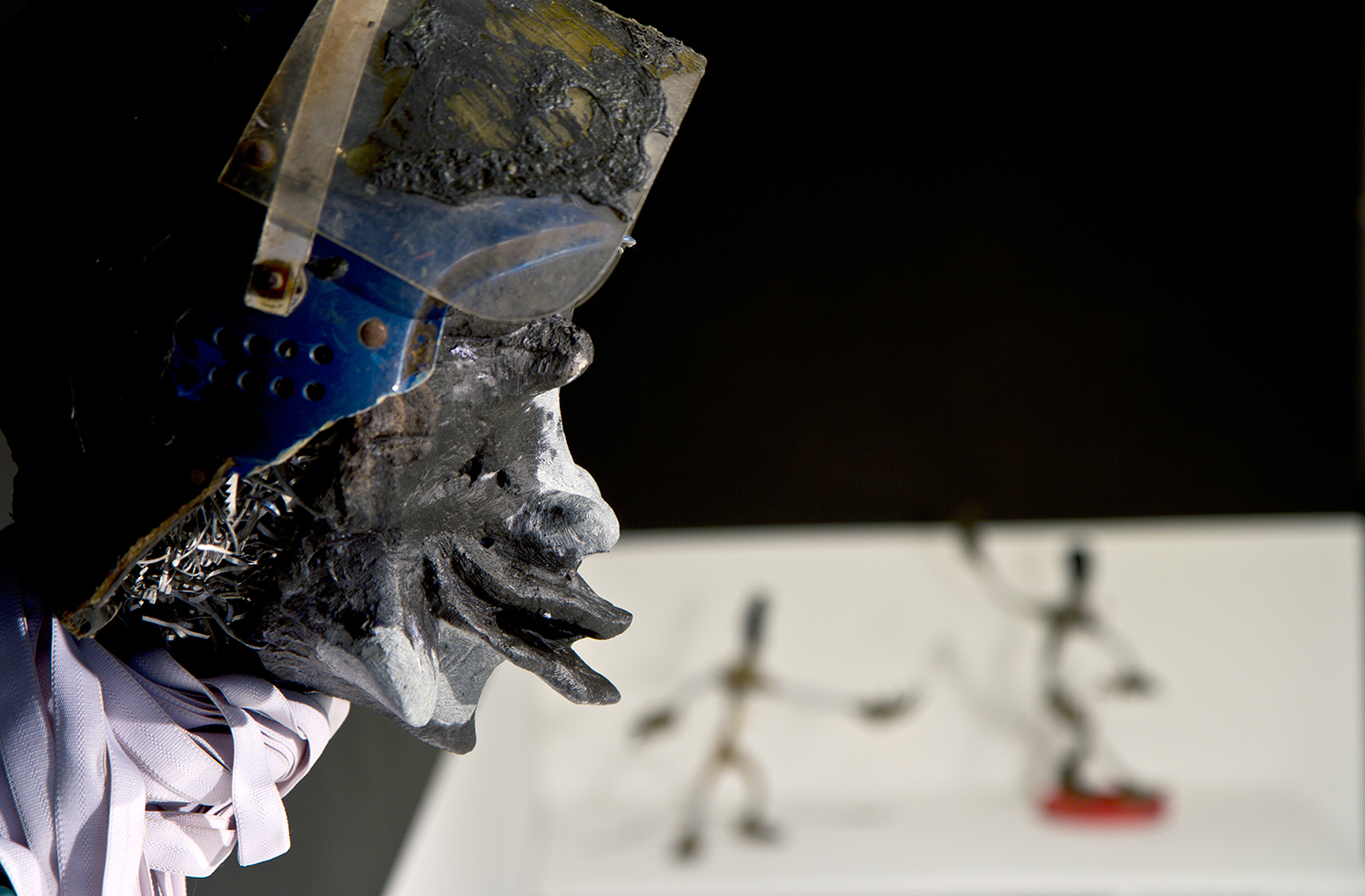
Terrence Musekiwa
brak watcher, 2016 (Detail)

Terrence Musekiwa
brak watcher, 2016
stone, helmet, brush head, elastic cotton, and wire
89 × 19 × 11 inches
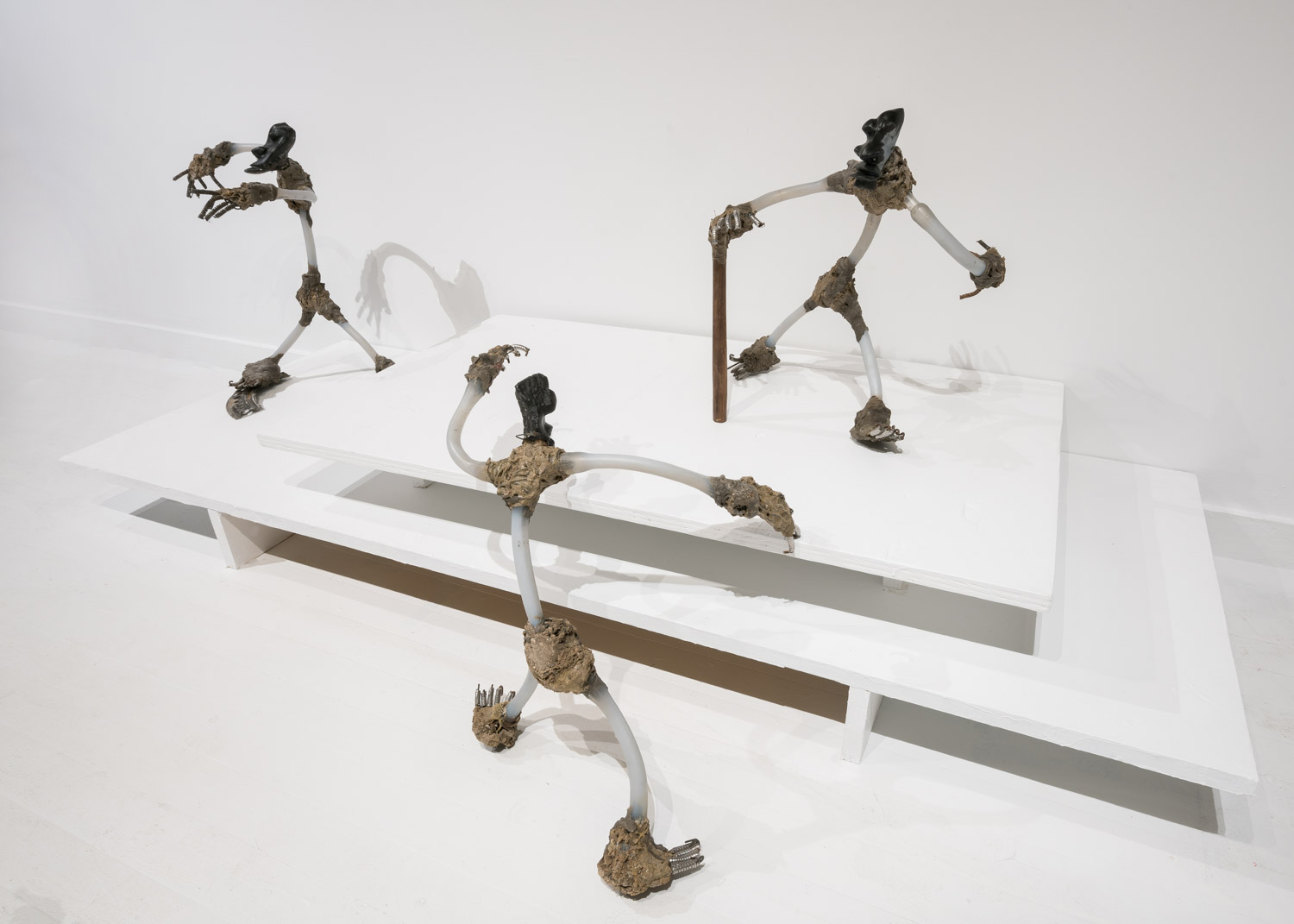
Terrence Musekiwa
Standing on a line, not being on either side, 2017
Catinca Tabacaru, NY
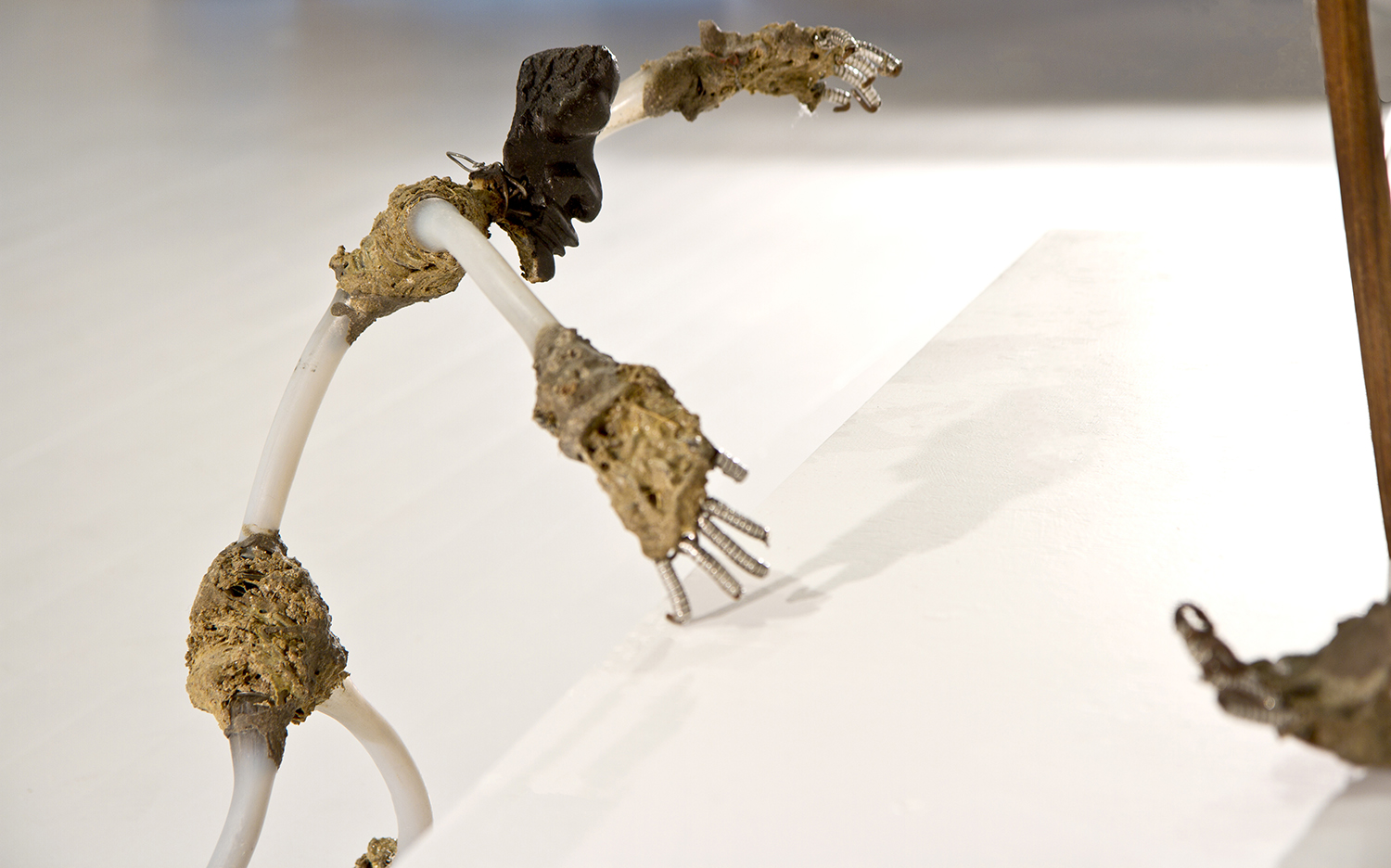
Terrence Musekiwa
Standing on a line, not being on either side, 2017
Catinca Tabacaru, NY
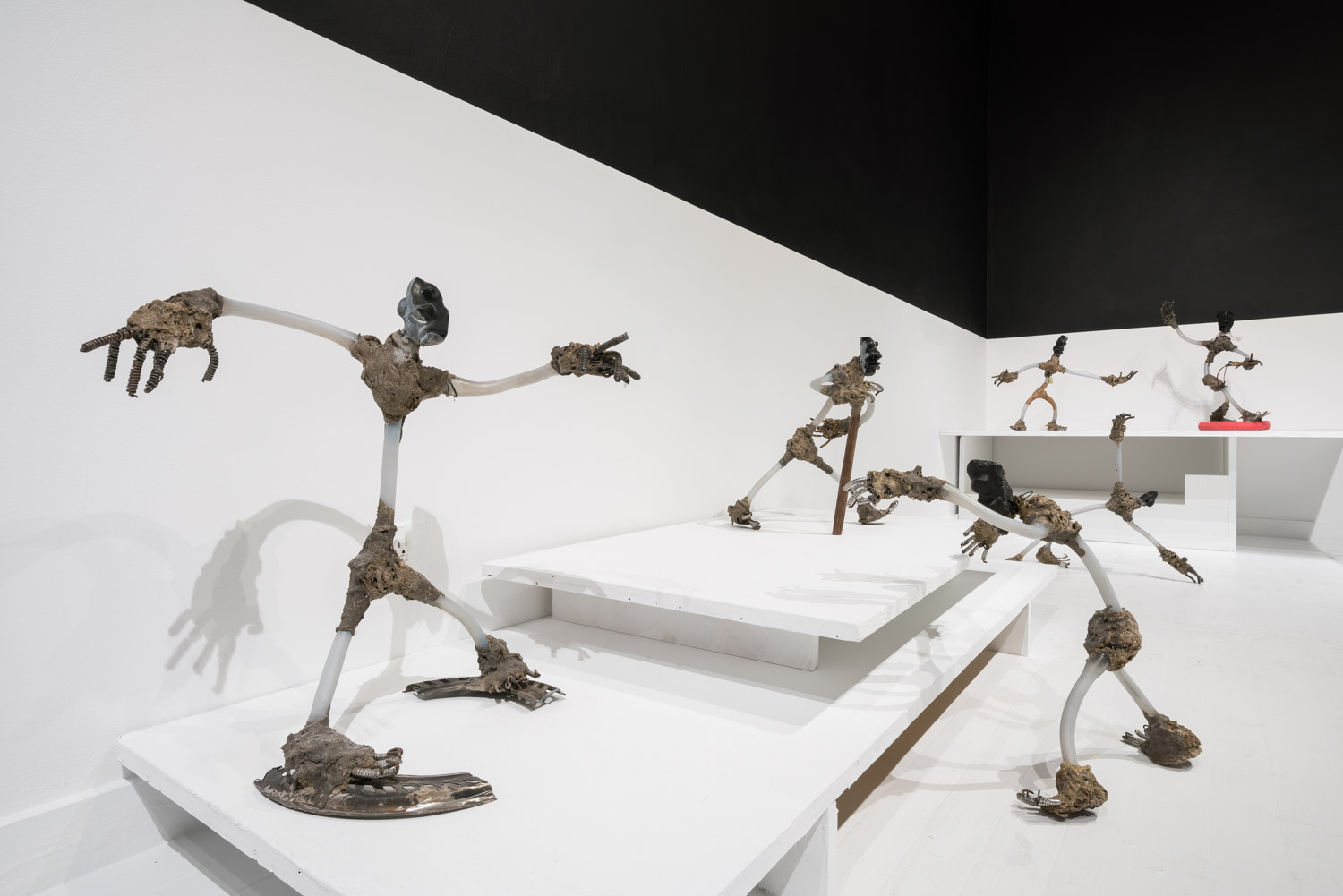
Terrence Musekiwa
Standing on a line, not being on either side, 2017
Catinca Tabacaru, NY
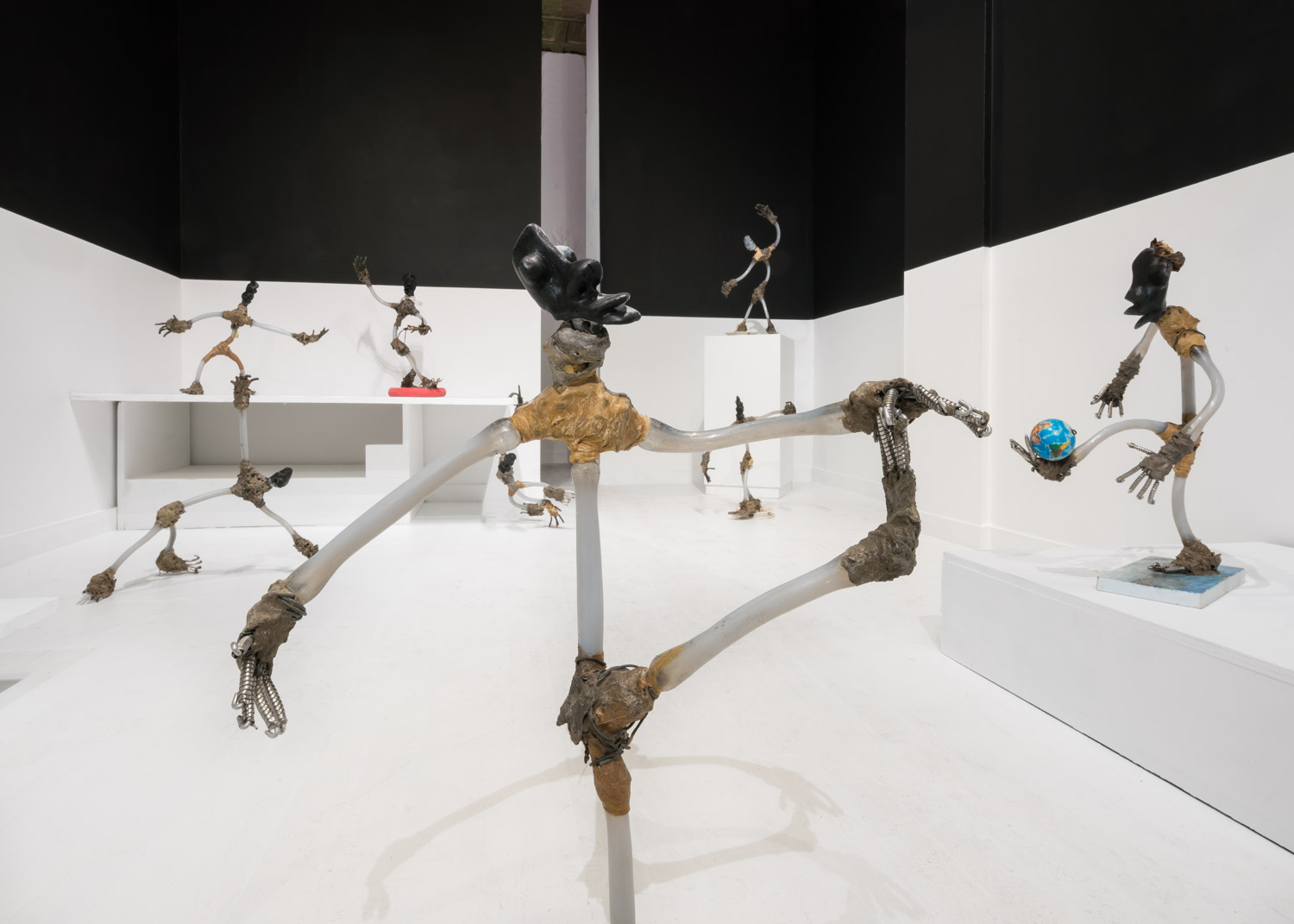
Terrence Musekiwa
Standing on a line, not being on either side, 2017
Catinca Tabacaru, NY
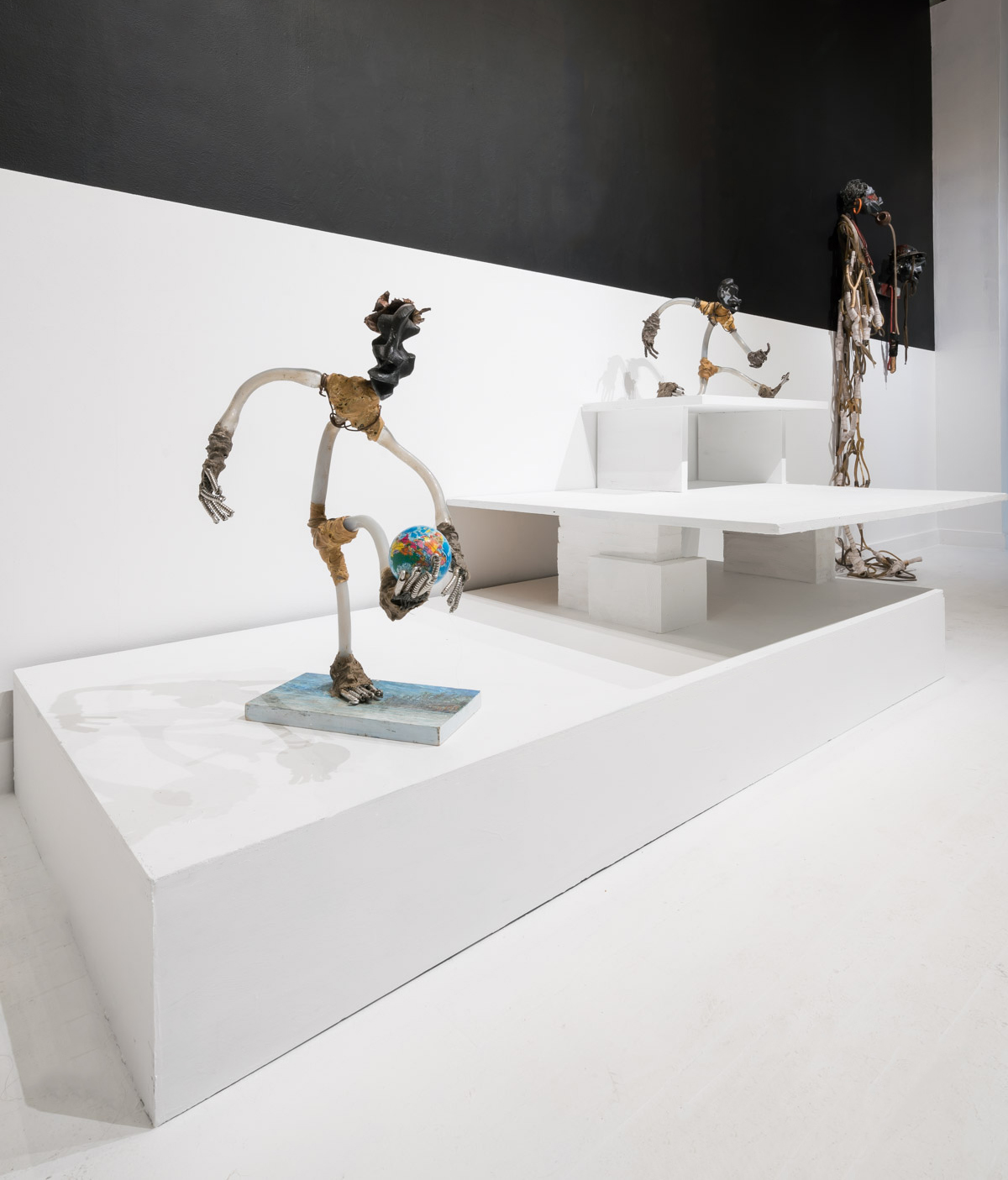
Terrence Musekiwa
Standing on a line, not being on either side, 2017
Catinca Tabacaru, NY

Terrence Musekiwa
vakomana vechimhanjemhanje (today’s youth) 11, 2017 (Detail)
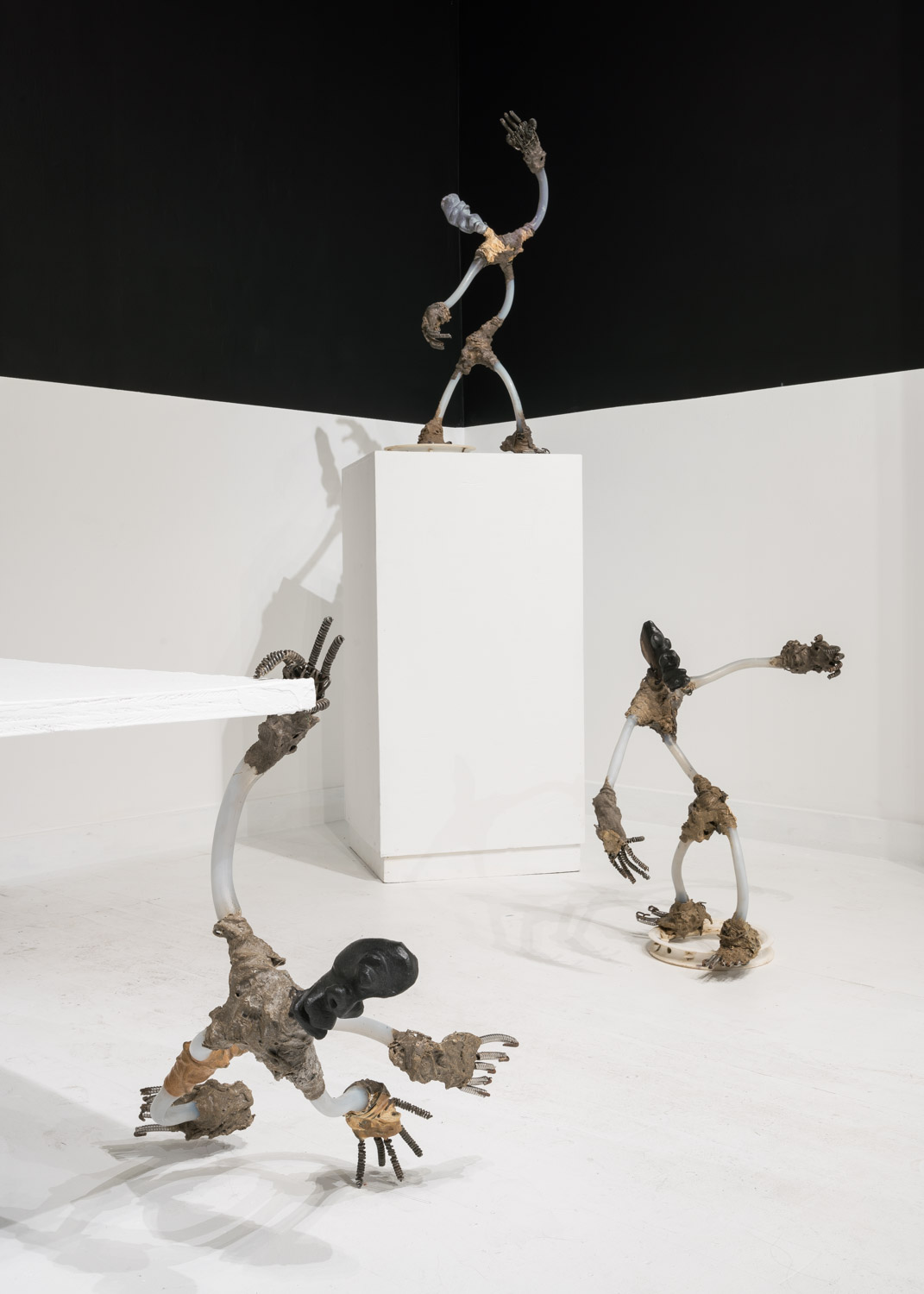
Terrence Musekiwa
Standing on a line, not being on either side, 2017
Catinca Tabacaru, NY
New York, NY, October 27, 2017: The Shona people have been carving stone for over a thousand years. Zimbabwean Terrence Musekiwa comes from this ancient tradition, himself shaping soap stones since the age of 5 to help his father produce pretty animal forms for tourists. Now 26 years old, the sculptor holds a degree from The School of The National Gallery of Zimbabwe, recently completed the Tiroche DeLeon Residency in Tel Aviv, and is a principal member of the CTG Collective.
Musekiwa exists on the margins of past and present, tradition and innovation, the physical world and the invisible spirits, order and disorder; between the discarded objects he finds in Harare’s infamous scrapyards, and the inherently political sculptures he transforms these into. “I am always trying to find balance between opposite forces – the place where opposites meet; the shape that meeting takes.”
With his first American solo show opening at Catinca Tabacaru’s New York space on October 27, 2017, Musekiwa lends power and motion to obsolete materials. With bare hands and simple tools – the hammer, the chisel, a saw – he gives life and humor to brooms, forks and helmets. He laboriously shapes stone, sometimes taking several months to finish one sculpture.
Twelve bopping figures, each a foot or so tall, occupy the Gallery’s floor as Musekiwa invites viewers to join the movement. Their bodies are made of preformed plastic bottles, wire and an undefined earth mixture; donning exquisitely sculpted heads that bestow onto each a unique, sometimes joyous personality.
On the gallery’s side wall, two floating heads oversee the crowd. One wears riot gear while the other points a slingshot.
Musekiwa, who does not believe in History, but instead in its ability to be repeatedly rewritten, engages in a global discussion on the Now – what now is and how now tends to reorganize what is here. History is an attempt to create order. Sculpture is an attempt to stop time.